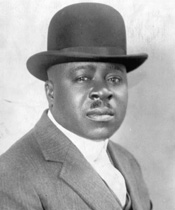Defender of the Race
Most
grade school children can state what Martin Luther King Jr. and Thurgood
Marshall accomplished during their lifetimes. Yet, we tend to forget
about other heroes. Throughout this month, let us consider all who
sacrificed to end segregation and tried to put an end to racial
inequalities. One of these heroes was Robert S. Abbott.
Enjoy
trivia? Here's one for you: In what American newspaper would you find the
first comic strip? The answer might surprise you, as it is the first
African American newspaper, the Chicago Defender owned
and run by an attorney unable to practice due to his race, Robert S. Abbot.
His paper was the first for publishing many things including a health column
and circulation of over 100,000. Much more important than that was his
focus.
He
began his venture in 1905 and quickly built up quite a following, mostly in the
Chicago area. By 1910, with the assistance of his first and only
employee, he covered racial issues not found in other publications.
Lynchings, rapes, and equally disturbing violence dominated his
headlines. Atypical of the times, he never used the word, Negro, in these
articles preferring to use "Race men and Race women".
Mr.
Abbott played his part in the Great
Migration, encouraging – through his paper – a black migration for better
living conditions in the north. WW1 and immigration laws slowed the flow
of qualified workers had created many job opportunities. Therefore, the
time was right for over a million African Americans to migrate from the south
to better jobs in the north.
As race riots erupted
across the country in 1919, he pushed for anti-lynching legislation;
still, no federal law exists. With readership growing daily, columnists
joined the Defender like early NAACP member and fighter for civil rights, Walter
White, and novelist, poet, and writer Langston Hughes.
Mr.
Abbott passed on in 1940 from kidney disease but his campaign for equal rights
carried on through his nephew John H. Sengstacke who grew the paper into the
largest and most-read black-owned newspaper in the world.
Black &
Women's History: Mary Ellen Pleasant (1812'ish-1904)
"I Have
a Dream" Speech Opened My Eyes to the Real World
Cultural
Insight: Who Are The Navajo of Arizona
Picture: Unknown - http://www.pbs.org/blackpress/news_bios/defender.html

Comments
Post a Comment